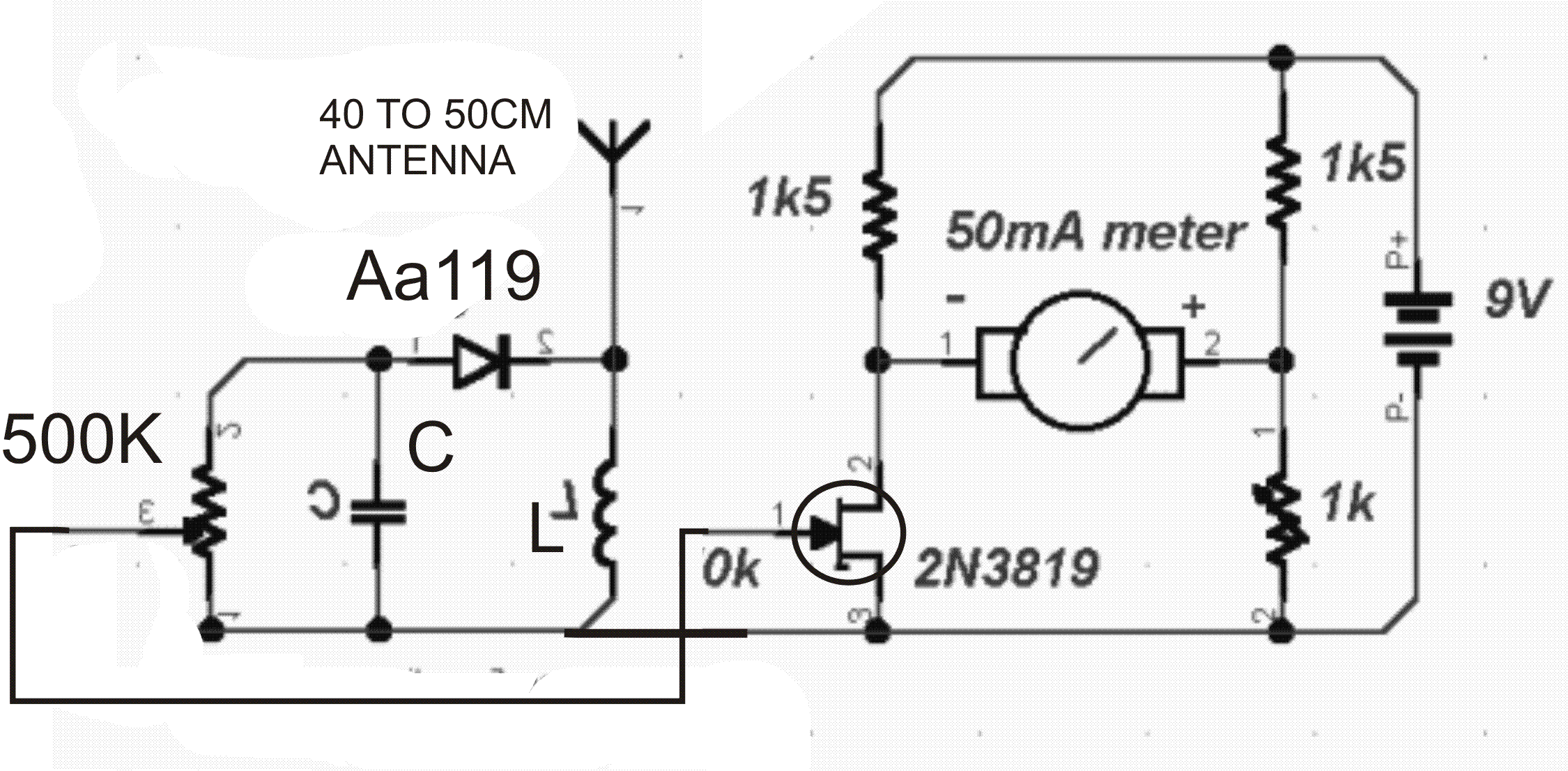The circuit can be used to measure the strength of a radio frequency ( RF) emitted from a transmitter.
This is an exceptionally simple RF Field Strength Meter circuit.
The main stage acts as a crystal recipient. Utilize a germanium locator diode (like 1N34, yet AA119 is substantially more normal in Europe), a silicon one won't do.
How the Circuit Works
The frequency is controlled by L and C. For the FM band and VHF, wind a loop 5mm in distance across, 6-8 turns of covered wire 1mm thick.
You can simply shift the recurrence by spacing the turns a touch looser or more tightly.
C is considerably less basic. Something around 100p is best, however.
The second stage is based around the flexible 2N3819 JFET high-impedance intensifier.
With the 470k potentiometer you can change affectability of the circuit. The trimmer is utilized to zero the meter.
Utilize any old 50mA or somewhat littler ammeter from the garbage box.

Problems:- You can't expect extraordinary execution from such a basic RF Field Strength Meter.
Affectability is sufficiently satisfactory to get a fundamental thought of the power that your transmitter is prepared to do.
Conceivable uses:- Use the field strength meter to discover when a transmitter is working at ideal power.
It can be exceptionally helpful when adjusting stages (like if there should arise an occurrence of the 4W transmitter) or exploring different avenues regarding diverse receiving wires.
Leave a Reply